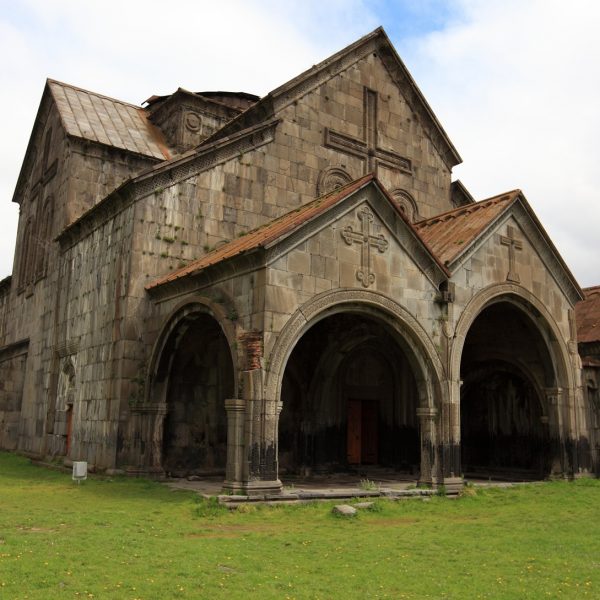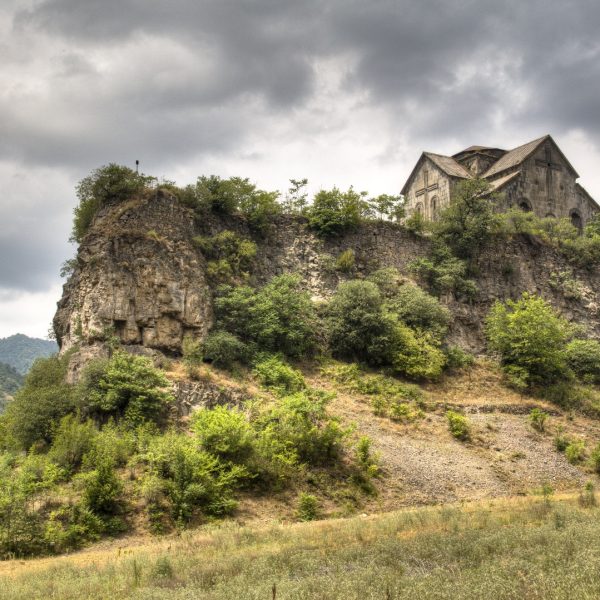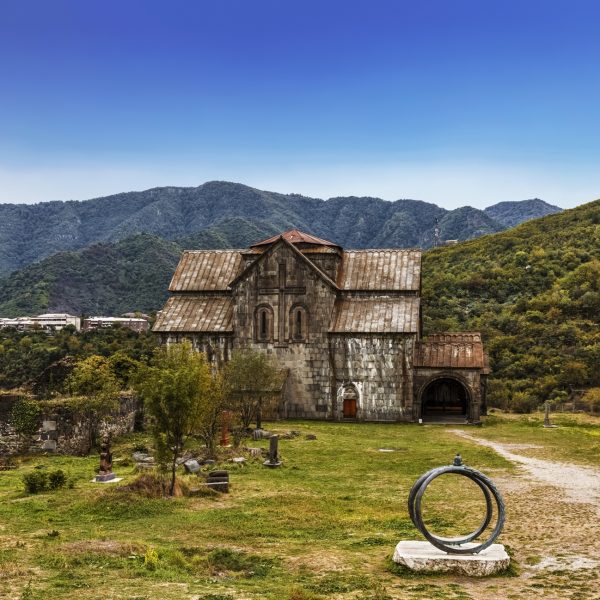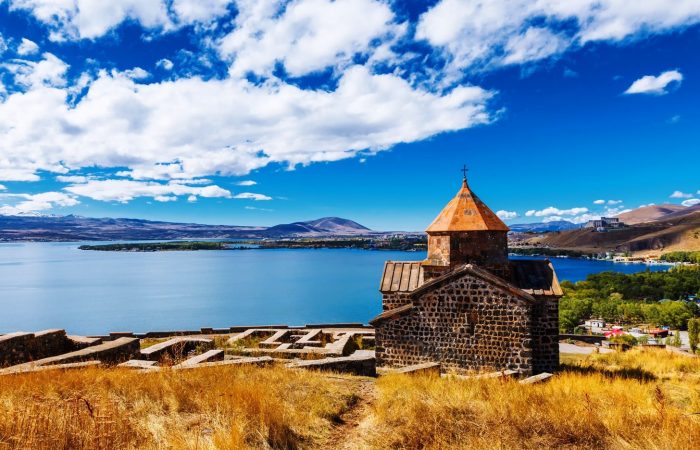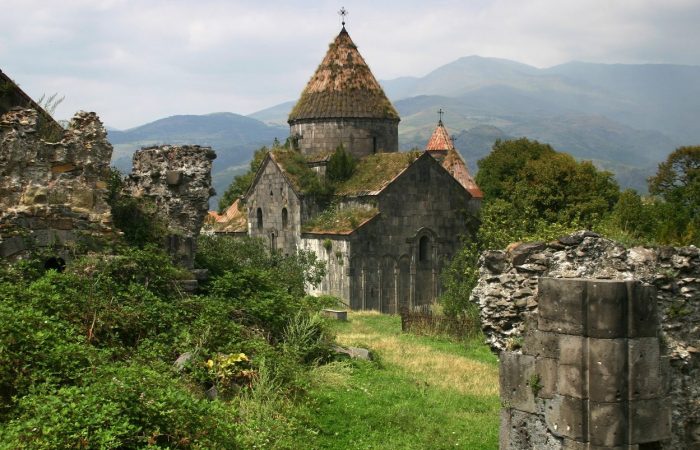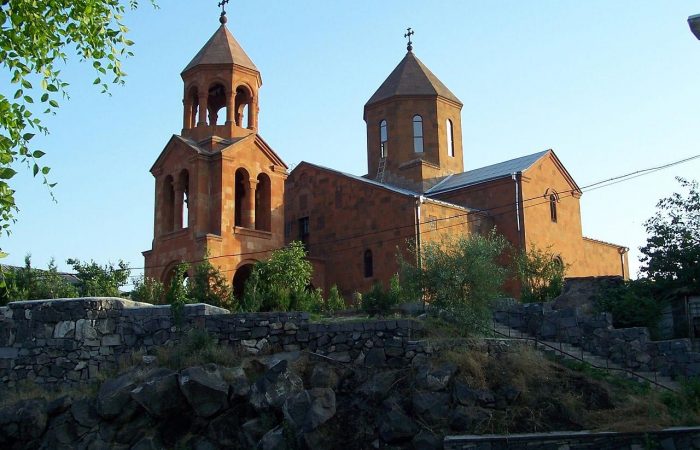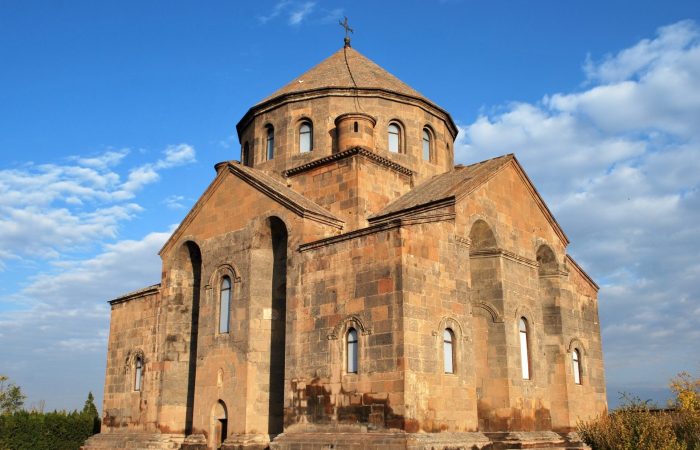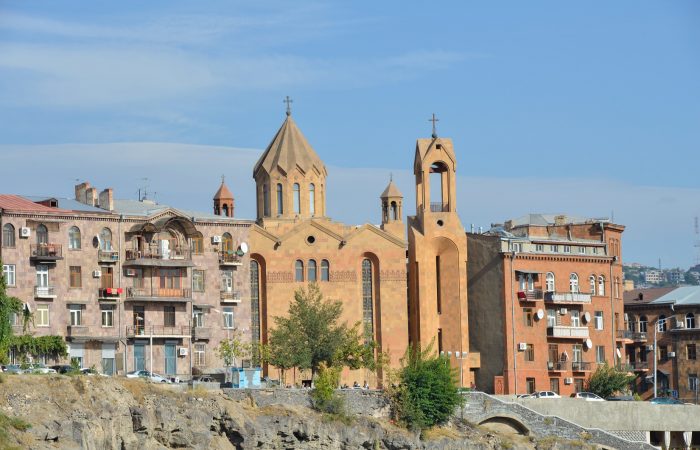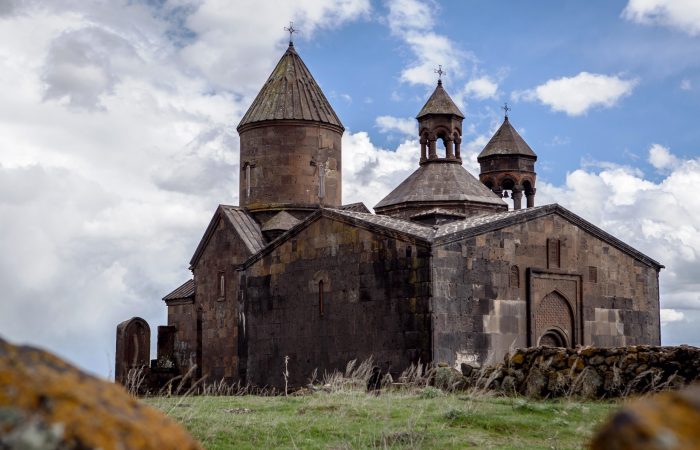Akhtala Monastery: History
Akhtala monastery is located 185 kilometers (114,885 miles) north of Yerevan. Being one of the very few orthodox monasteries in Armenia it was erected in the times of the Armenian Renaissance (note that Armenian Renaissance occurred much earlier than the European.) Some historical data claim that the settlement was called Agarak. Some later inscriptions and manuscripts dating back to the 12th-13th centuries mention it as Pghndzavank. It was called so because of the rich copper mines found there. The name Akhtala is thought to be first mentioned in 1438.
What does Akhtala mean? One suggested point is that the name has Turkic origin and means “white glade.”
Akhtala carried great significance; it protected the northwestern regions as well as the road that took from Armenia to Georgia. Akhtala Fortress was built in the late 10th century by the Kyurikids, who by the end of the 12th century starting losing their influence. It’s the period when the Seljuks appeared there. The towers and the walls of the fortress are made of bluish basalt and lime mortar.
When most of Armenia was liberated due to Armenian and Georgian united forces led by the Zakarids, that’s when Akhtala came to life again (Zakarids were a noble Armenian dynasty). In 1180s Akhtala belonged to Ivaneh Zakarian, who had accepted Greek Orthodoxy in the Georgian court and consequently, turned the Armenian foundation into Chalcedonian.
“Ivane, Zakare’s brother, also died [that year] and was buried at Pghndzahank’ near the church which he himself had built, taking it from the Armenians and making it into a Georgian monastery,” writes Armenian historian Kirakos Gandzakeci. From the works of Kirakos Gandzaketsi and Vardan Areveltsi who have referred to this place intheir writings, it becomes clear that the place was known as Pghndzavank. That was back in the 13th century, and as already mentioned the region was called so because of the rich copper deposits.
The 1220s were disastrous for Armenia because of the Mongol invasions, which weakened the influence and control of the Zakarids. Ivaneh’s son Avag had to recognize his subordination to the Mongol leader. The Mongol rule continued until 1340 but was interrupted by attacks made by Turkic tribes, which took control of most of Armenia in 1400. It didn’t last long, since there came Turkic-Mongol ruler Tamerlane. Interestingly, the rocks around Akhtala are known as Lenk Timur (Tamerlane). A legend has it Tamerlane’s wife was buried in one of the rocks with lots of treasures and gold put in her grave. Later, the soldiers who had buried Tamerlane’s wife were killed upon his command. It was done so that nobody knew where the wife was buried and the treasures were not stolen. Another legend says that Tamerlane’s son was in love with an Armenian girl and wanted to be with her and also stop his father’s invasions. Lenk Timur got furious learning about that and therefore locked his son in one of those rocks. Locals claim that voices, particularly screams are sometimes heard from the rocks, which they take for Lenk Timur’s son’s shouts.
In 1763 Georgian King Erekle II settled 800 Greek families in Akhtala. They were to work in the gold and silver mines. The Greeks called the monastery Meramani. They have left inscriptions on the monastery walls. Later, French bought Akhtala deposit and the Greeks – that of Alaverdi. In this respect, another legend has it, that Charles de Gaulle who was to become the President of France was born in Akhtala.
In the 19th century Melikovs that were an Armenian noble family in Georgia assumed power over Akhtala.
Akhtala Monastery: Surb Astvatsatsin Church
The monastery’s main church Surb Astvatsatsin (Holy Mother of God or Holy Virgin) was probably erected in the 11th-13th centuries. No exact data is known. According to Kirakos Gandzakeci, Ivaneh was buried there in 1227. In his turn, Stepanos Orbelian who was a 13th century Armenian historian referred to the church in 1216. Researches show that the church murals date back to 1205-1216. A record made in 1188 on the back of a khatchkar recounts about the construction of Surb Astvatsatsin Church in Akhtala. The record was left by Princess Mariam and it reads, “I, the daughter if Kyurikeh, Mariam, erected Surb Astvatsatsin at Pghndzahank, those who honor us remember us in their prayers.” Kyurikeh II was the third king of the Kingdom of Lori. There are other assumptions regarding the church construction as well. One of them suggests the church was built by Byzantine Emperor of Armenian extraction Heraclius in the 7th century, another one claims it was built by Georgian King Vakhtang I Gorgasali in the 5th century. All these points can neither be accepted, nor denied since there is no any evidence proving or rejecting them.
The church carries religious significance because the cross with which John the Baptist is believed to have baptized Jesus Christ was being preserved there. Ivaneh Zakarian, however, sold it to the monastery of Noravank for a rather large amount of money.
The murals of the church are what momentarily grasp attention. They were made after the church was converted into Chalcedonic. Notably, the colorings are characteristic of Byzantine art, whereas the thematic solutions are Armenian. The frescoes feature scenes from the New and Old Testaments. Other than that they depict different saints including Saint Gregory the Illuminator. Holy Virgin’s image holding Jesus can be found on the dome. Only parts of it have survived. Some of the murals were renovated in 1979. There is an interesting thing about the bright and vivid colors of the murals. The locals say that they used to distract visitors from the Mass, and it was so much annoying for the priest that he ordered to cover the frescoes with lime.
In 1975-1978 the the top parts of the walls were repaired. The tin roof was removed. It was replaced by basalt slabs. The main entrance and the pillars were also repaired. There was also a 14th century ramshackle wooden belfry, which was ultimately removed from the yard.
Akhtala Monastery: Archaeological Excavations
Archaeological excavations have brought forth rather interesting things about Akhtala region. Still in 1887-1889 archaeologist Jacque de Morgan discovered rectangular 8th century sepulchers near Akhtala. Also a crypt dating back to the third millennia BC was discovered there. It belonged to the times when people were being buried sitting. Having studied the area Jacques de Morgan wrote, “Older than Europe and Greece, it still retains the traces of those civilizations that were the cradle of our own.”
The monastery has pilgrimage days, which last two days and are held on September 20-21. In this respect, Armenians, Greeks and Georgians come to visit the monastery.
Eventually, Akhtala is one of the most valuable and beautiful samples of Armenian-Chalcedonian architecture and Armenian medieval culture. It entices not only with its murals, breathtaking surrounding and striking history but also with the legends that seem to haunt it and make it even more miraculous and mysterious.

